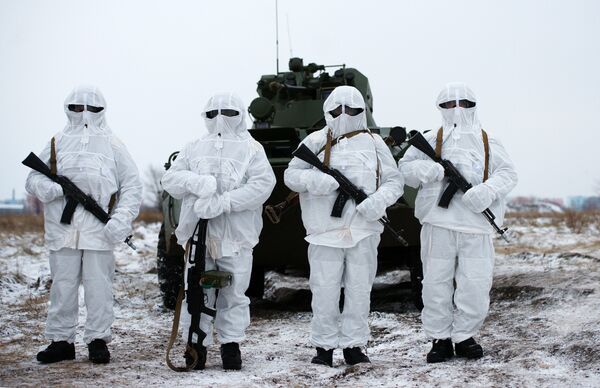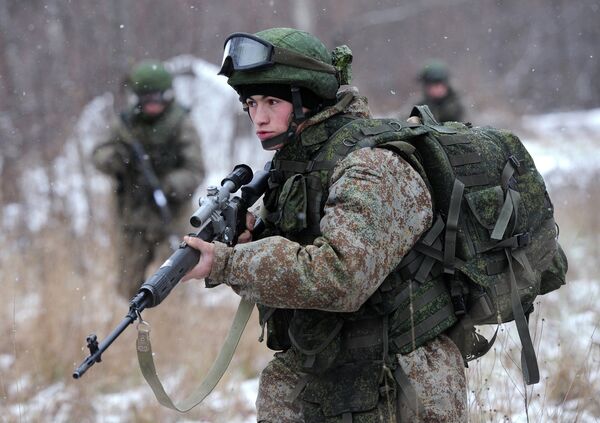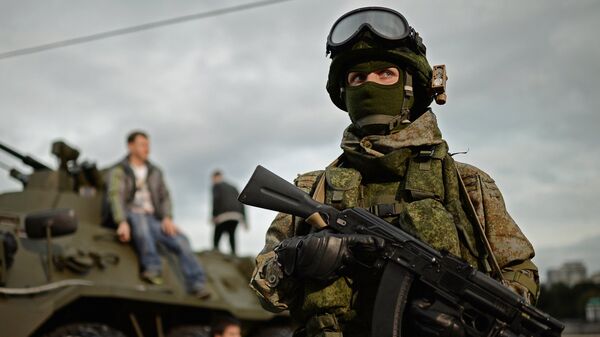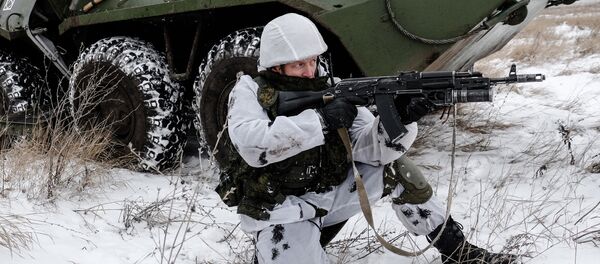The Ratnik system is designed to improve the connectivity and combat effectiveness of combat personnel in the Russian Armed Forces.
Improvements include modernized body armor, a helmet with a special eye monitor (thermal, night vision monocular, flashlight), communication systems and special headphones. It includes 10 subsystems and 59 individual items. Furthermore, Ratnik protects almost 90% of a soldier's body.
Universal Complex
By the beginning of 2015, Special Forces of the Central Military District were fully equipped with the Ratnik system, afterwards the marines of the Pacific Fleet were also armed with it.
After a couple of months, snipers of the 102nd Russian military base in Armenia were also upgraded with Ratnik system. Throughout 2016, Ratnik was supplied to the units of the Airborne Forces and the Land Forces.

In Syria, this system is actively being used by marines who are defending the Hmeymim base and by the military police units and fighters of the Special Operations Forces.
A Russian contractor who recently returned from a mission in Syria told Sputnik in a comment that the composite ceramic plates of the new bulletproof vest managed to save many lives.
Ratnik is a single unified set for general-purpose forces capable of being tuned individually for the specific needs of a soldier or unit.
“The main advantage of this system is that it was designed as a single unit,” editor of the magazine, “Arsenal of the Fatherland” Viktor Murakhovsk said.
In addition, the design of this kit is “module based.” This means that, depending on the tasks, serviceman can fasten the equipment and add the necessary elements or detach unnecessary ones.
Choice of Weapon
The total weight of Ratnik is about 48 pounds. Equipment provides reliable protection to over 90% of the body.
The system was designed for continuous operation for at least 48 hours with an average life of one set lasting for five years.

In addition to personal protective equipment, Ratnik also includes a radio station, GLONASS-navigator, identification sensors; the “Strilets” control system, which allows coordinating unit operations in combat, active headphones, frost-resistant battery to power all this high-tech and much more.
In addition to the all-new technology, “Every module of Ratnik is constantly being further improved,” Victor Murakhovsky said.
“The equipment is being improved and modernized and eventually new components will be included in the equipment kit. In addition to that, this year the military tests of new automatic machine designed especially for Ratnik should be completed and they will be compatible with all the one-system kit,” the expert said.
Future of Ratnik
In Russia, work is already underway on a number of promising areas that can significantly increase combat capability.
“There are a lot of promising technologies,” Viktor Murakhovsky said, “For example, now we are discussing the possibility of using augmented reality in Ratnik.”
In the future, data on the tactical situation will be displayed to the serviceman directly on the visor.
In addition, work is underway on new means of protection — more robust and lightweight body armor and helmets.
“Someday we'll reach the use of exoskeletons, but that is still a bit far away,” Murakhovsky said.
The leadership of the Central Scientific Research Institute of Precision Engineering in 2014 reported that individual equipment of a new generation will be completed and will go into production in 2020-2030.




